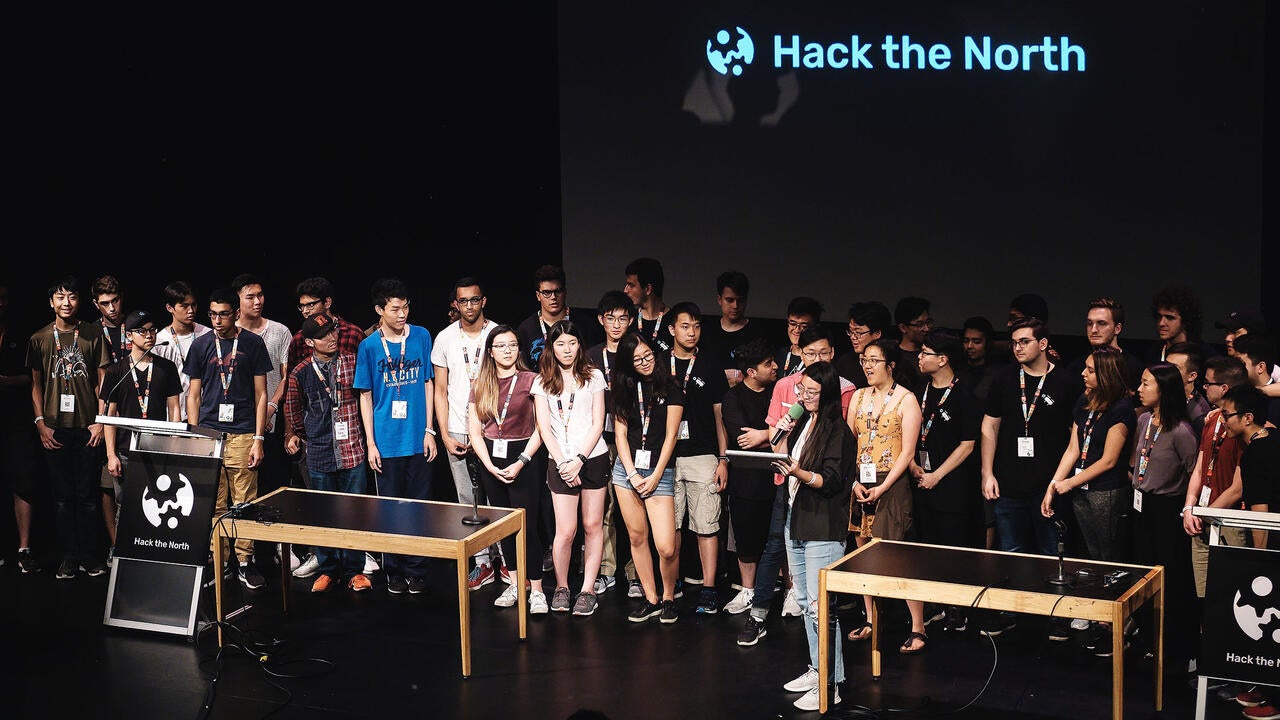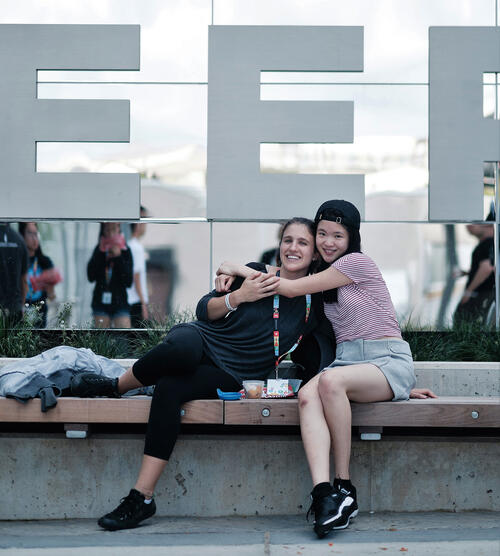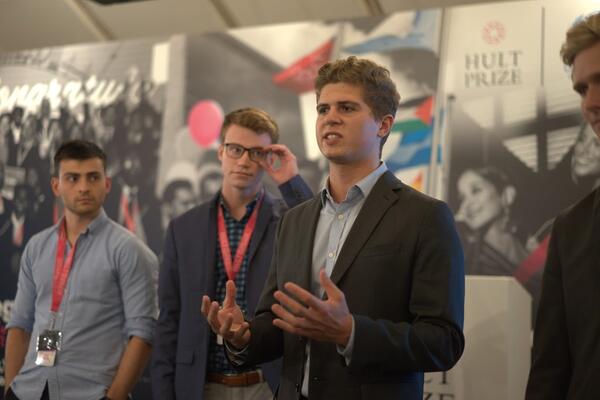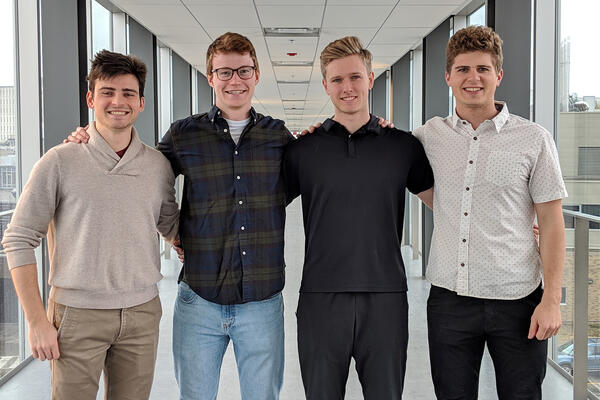
Hack the North hosts 1,500 young creators
Talented participants from around the world converge for big invention event at Waterloo

Talented participants from around the world converge for big invention event at Waterloo
By Brian Caldwell Faculty of EngineeringHow do you top the surprise arrival of a Canadian military helicopter carrying special operations soldiers who slide down ropes as it hovers right outside?
About 1,500 young people might just find out this weekend when they come together at the University of Waterloo for Hack the North, a three-day whirlwind of activity that is the largest hackathon in Canada and one of the largest in North America.
Participants from 13 to 33 years of age — about 80 per cent are undergraduate university students — are attending the free event from as far away as China and India to create in teams, learn and have fun while they’re at it.
Supported by the Faculty of Engineering and a long list of corporate sponsors including Microsoft and Google, the student-run event provides free food, accommodation, transportation, mentoring and equipment so hackers can concentrate on completing ambitious hardware and software projects.
“Where else do you have all these different minds coming together for a solid weekend of building something cool with so much support?” asked Corbin McElhanney, a third-year software engineering student at Waterloo who is co-director of the sixth annual event.
“The core appeal is that you can just focus on research, learning and building, really pushing the limits of your own abilities with no other distractions. Some really unique solutions come out of that kind of environment.”
The appearance of a helicopter outside the new Engineering 7 building was one of the highlights at Hack the North last year. The year before that, Prime Minister Justin Trudeau was the surprise speaker at the opening ceremonies.
Whether or not there is a twist this year remains to be seen, but it’s already clear the event will be far bigger than ever before, with 1,500 hackers from more than 20 countries, up from 1,000 in 2018.
The participants, who even get help with airfare if they’re coming from far afield, were selected from several thousand applicants by a core group of about 40 student volunteer organizers.
Although basic computer programming skills are required, technical abilities vary widely. Almost a third of attendees this year will be at their first hackathon. “We want to see passion for learning, passion for building and the desire to meet like-minded people,” said McElhanney, who has attended at least 15 hackathons as a participant. “Winning has never been our focus.”
Following registration and opening ceremonies Friday night, hackers in teams of up to four will start their projects at 11:30 p.m. The deadline for their projects is 8 a.m. Sunday.
Prizes such as virtual reality headsets and Netflix subscriptions will go to 12 finalist teams selected by judging panels. Sponsors also hold numerous competitions for teams that use their products on projects.
 Two participants at the 2018 edition of Hack the North pose outside the Engineering 7.
Two participants at the 2018 edition of Hack the North pose outside the Engineering 7.
While work is underway in the Engineering 7 and Engineering 5 buildings, hackers can take breaks to attend workshops, play soccer in huge inflatable balls or enjoy several other diversions — even grab some sleep on cots and air mattresses set up in the Engineering 6 building next door.
New this year, the public is invited to project demonstrations in the ground-floor Sedra Student Design Centre in Engineering 5 from 9:30 a.m. to 1 p.m. on Sunday to see what all those hackers have built.
“You want a good sleep by the end of it, you definitely feel tired,” said McElhanney, “but you typically come out of it with a project that is honestly pretty impressive.”

Read more
Four new grads tackle youth unemployment in attempt to win million-dollar prize

Read more
From maze-walking robots to self-driving cars, Waterloo captures the nation

Read more
Recent alumni take their project to a prestigious business incubator in Henry the VIII’s former home
The University of Waterloo acknowledges that much of our work takes place on the traditional territory of the Neutral, Anishinaabeg, and Haudenosaunee peoples. Our main campus is situated on the Haldimand Tract, the land granted to the Six Nations that includes six miles on each side of the Grand River. Our active work toward reconciliation takes place across our campuses through research, learning, teaching, and community building, and is co-ordinated within the Office of Indigenous Relations.